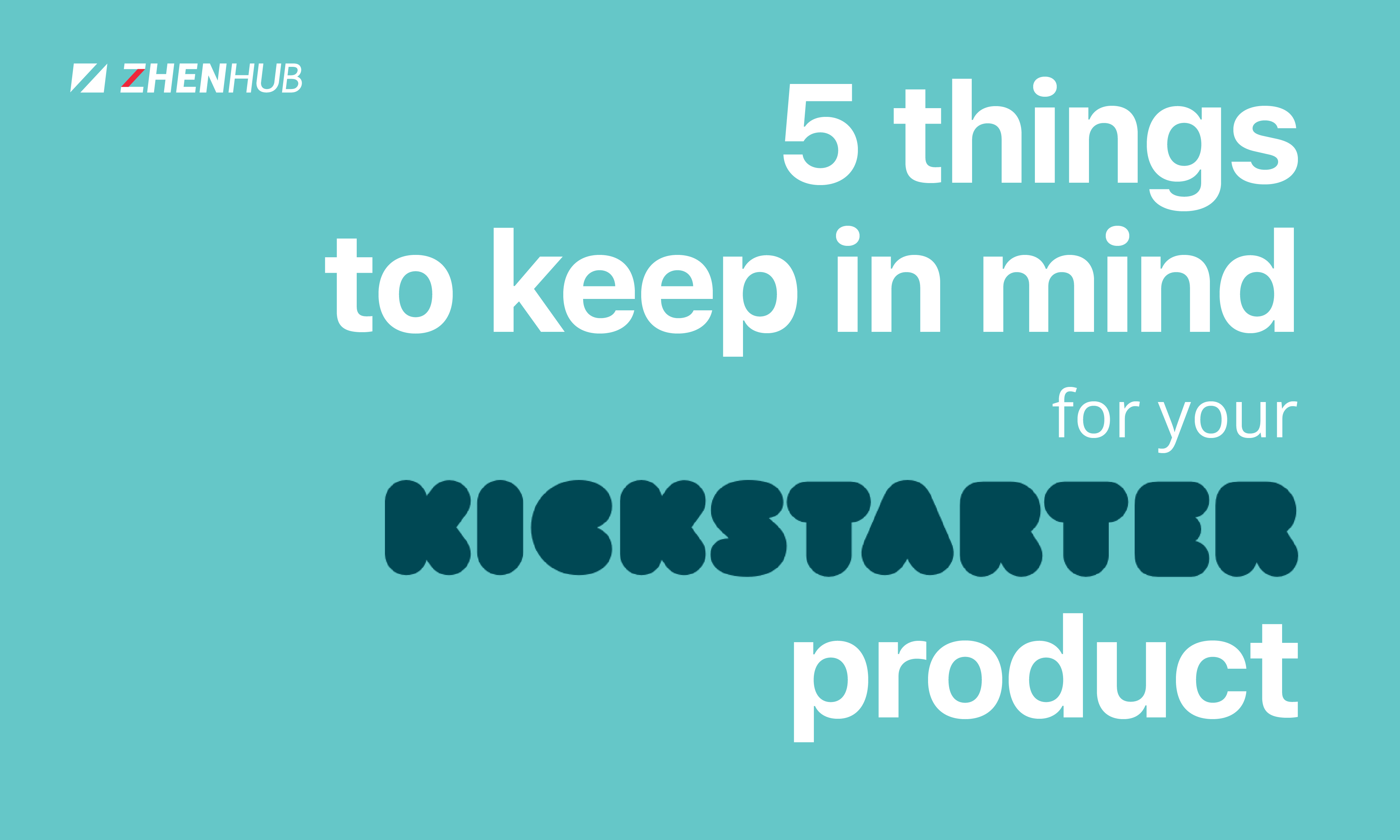First, congrats on reaching your crowdfunding campaign goals!
According to entrepreneur.com, “between 69 and 89 percent of projects – depending on the platform – fail to reach their targets.” So, needless to say, crossing this milestone is a big accomplishment.
Now, however, begins the real challenge of sourcing, manufacturing, and distributing your products to your backers. And no matter how many times you’ve done this, it’s no walk in the park – we know because many of our team members have gone through the process.
We’re here to share with you some tips on what to look out for and how to save big.
1. Be smart with your packaging
No matter what shipping service you choose, you will always be charged according to
- Speed,
- Weight,
- Distance from A to B, and
- Package dimensions.
Although reducing any of the factors above will bring down your shipping costs, package dimensions are the only factor you are directly in control of – so take advantage of this. Don’t create over-sized packaging as this will affect your shipping rates.
To generate a quote, most logistics services will first compare your product’s actual weight and volumetric (dimensional) weight* and then charge you according to whichever weight is higher.
*Volumetric (dimensional) weight is a calculation that reflects the density of a package; for example, if you are shipping large heaps of styrofoam, the weight of the package may be very light, but the package still occupies a large volume of space.
You can go ahead and calculate the volumetric (dimensional) weight of your product by following this link http://www.dhl.com.hk/en/tools/volumetric_weight_express.html.
Are you shocked by the figure? So are we. For large but light products, forget about using standard packaging. Custom packaging is your wallet-friendly choice. Try your best to design custom packaging that is compact but safe for your product.
Of course, compact does not mean your packaging is the smallest it can be without the product popping out – safeguarding the product always comes first. Afterall, handling the shipping cost for a returned product is much more expensive than shipping a package with some “breathing space.”
We recommend keeping a minimum of 1 to 2 inches of length/width/height “breathing space” for your packages. This space should be filled with bubble wrap, styrofoam popcorn, or other protective material.
2. Keep inventory as simple as possible: limit your stretch goals and add-ons
Shipping and fulfilment for crowdfunded products are complicated.
Firstly, most campaigns sell to, on average, 20 countries around the world. This, in itself, is a logistical hassle.
Also, many campaigns offer stretch goals and require customized products based on the destination country. For instance, electronic products need to provide different plugs for 220V and 110V depending on which country their backers are from. Other campaigns have special deals and packaging for a single product, such as a 2 unit pack and a 3 unit pack.
Each variation of your product means there’s a new SKU (Stock Keeping Unit) and packaging requirements you need to submit to your shipping partner. This complicates the pick & pack process and leaves more room for error. By keeping a manageable amount of SKUs, you can simplify the fulfilment process and reduce errors.
If your product simply requires many add-ons and customized pick and pack procedures, ensure that your products have clear SKUs and are labeled accurately on the outside of each package.
3. Do the calculations before you offer free shipping
The idea of offering free shipping worldwide is very attractive. But when you realize how much this may eat into your profit margin, it may not be as attractive to you anymore. Make sure to be very meticulous when you do the calculation work. If you are selling low-value products worth $5, for example, it does not make financial sense to offer free shipping.
Based on our own experience as entrepreneurs, we suggest the following:
- Offer free shipping on the product(s) you want to promote – this is a great way to promote new items or clear out your old inventory.
- Offer free shipping only when orders exceed a certain amount – this is common practice to boost sales in ecommerce.
4. Research import duties and taxes
Many crowdfunders are unaware of the import duties or VAT applicable to their products. However, you are not to blame – finding this out is often a complex and tedious process, especially since import duties and taxes vary from country to country and product to product.
No matter the product, the key is to remain transparent with your customer when it comes to those fees.
5. Keep communication with your backers alive
Don’t stop communicating with your backers after your crowdfunding campaign is over.
Given the technology available today, en masse communication is incredibly convenient. Within a few minutes, you are able to build hype and keep your backers informed about your product. After all, your backers are the ones who believed in your product before anyone else. However, remember not to overpromise on your delivery time. Most successful campaigns face there hiccups during production or stalls in delivery during standard peak season. Be sure to account for this in your timeline.
We hope these five pointers help you on your crowdfunding journey. Many of our team members at ZhenHub have run their own successful crowdfunding campaigns and ecommerce stores.
Daisy is a Taobao whizz who likes to use an unconventional approach in sales and marketing. Feel free to reach out to daisy[@]zhenhub.com if you have any questions.


